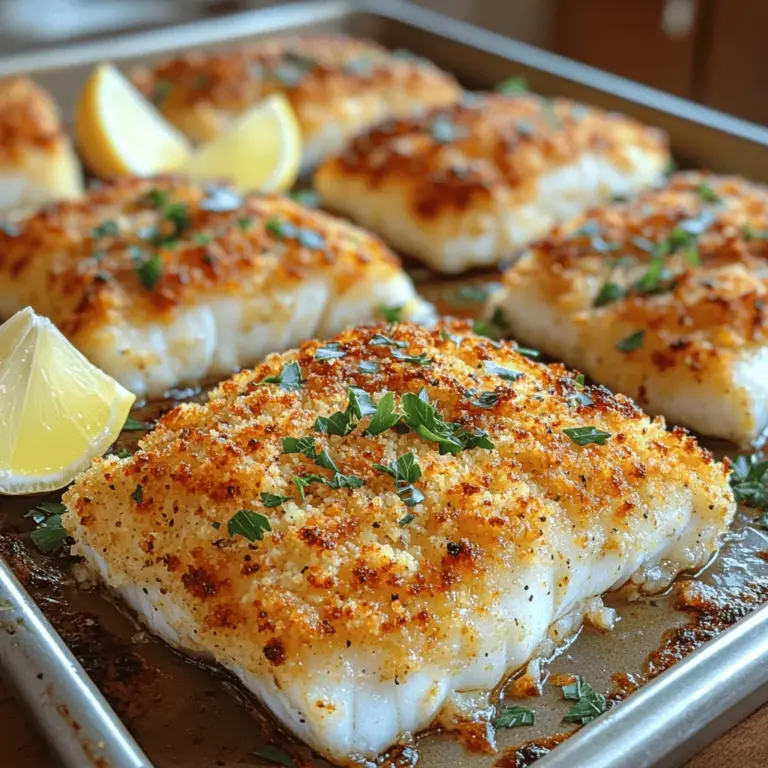Introduction
Spaghetti Carbonara is a dish that embodies the essence of Italian cuisine—simple yet incredibly flavorful. With its origins rooted in the Lazio region, particularly Rome, Carbonara has captured the hearts and palates of pasta lovers around the globe. The dish has an intriguing history, believed to have been created by Italian charcoal workers (carbonai), who prepared it with ingredients that were easy to carry and required minimal cooking. Over the years, this classic recipe has evolved while still retaining its traditional essence, making it a staple in many Italian kitchens.
To truly appreciate the delightful flavors of Carbonara, one must understand the significance of using authentic ingredients. Each component plays a crucial role in achieving the dish’s signature creamy texture and rich taste. In this guide, we will not only delve into the history and uniqueness of Spaghetti Carbonara but also explore the essential ingredients that make this dish a culinary masterpiece. By the end of this article, you will have a comprehensive understanding of how to prepare this classic recipe, from selecting the right ingredients to mastering the cooking process.
Understanding Spaghetti Carbonara
What makes Spaghetti Carbonara stand out among the multitude of pasta dishes? The answer lies in its unique combination of ingredients and the method of preparation. Unlike many other pasta dishes that rely heavily on sauces, Carbonara achieves its creamy consistency without the use of cream. Instead, it utilizes the emulsification of egg yolks with the rendered fat from guanciale, creating a luscious sauce that clings perfectly to the spaghetti.
Carbonara is deeply rooted in Roman culinary tradition, showcasing the Italian philosophy of utilizing high-quality, fresh ingredients to create impactful flavors. This dish is often compared to other pasta dishes such as Fettuccine Alfredo, which uses cream, or Spaghetti Aglio e Olio, which focuses on garlic and olive oil. While both are delicious in their own right, they lack the distinctively rich and savory profile that Carbonara delivers. In essence, Carbonara is a celebration of basic yet exquisite ingredients, making it a favorite among chefs and home cooks alike.
Essential Ingredients for Authentic Carbonara
To craft an authentic Spaghetti Carbonara, it is vital to use traditional ingredients that contribute to its characteristic flavor and texture. Below, we explore each ingredient in detail:
Spaghetti
Choosing the right type of pasta is paramount in achieving the perfect Carbonara. While spaghetti is the traditional choice, other long pasta varieties such as fettuccine or bucatini can work as well. It is essential to select high-quality pasta, preferably made from durum wheat semolina, to ensure the dish has the right bite and structure. Cooking the pasta to an al dente texture allows it to hold up well against the sauce, creating a satisfying mouthfeel.
Guanciale
Guanciale, or cured pork cheek, is a key ingredient that gives Carbonara its distinctive flavor. Unlike pancetta or bacon, guanciale has a higher fat content and a unique richness that elevates the dish. Its preparation involves curing the pork with salt and spices, which develops a complex flavor profile that is both savory and slightly sweet. If guanciale is unavailable, pancetta can be used as a substitute, but it is essential to note that it will alter the final taste slightly.
Eggs
Eggs are the heart of the Carbonara sauce, providing creaminess and richness. It is essential to use fresh, high-quality eggs, as they contribute to the sauce’s flavor and texture. Traditional recipes typically call for egg yolks, which create a velvety sauce when emulsified with the hot pasta. Some variations use a combination of whole eggs and yolks, but it is crucial to maintain the right balance to achieve the desired consistency.
Pecorino Romano
Pecorino Romano cheese is a staple in Roman cuisine and is integral to authentic Carbonara. Made from sheep’s milk, it has a sharp and salty flavor that complements the other ingredients beautifully. When grated, Pecorino Romano adds depth and richness to the sauce, enhancing the overall taste of the dish. For those unable to find Pecorino Romano, a good-quality Parmigiano-Reggiano can be used, though it will impart a different flavor profile.
Black Pepper
Freshly cracked black pepper is essential for adding a layer of heat and complexity to Carbonara. The pepper should be used generously, as it balances the richness of the guanciale and eggs, creating a harmonious flavor profile. Avoid using pre-ground pepper, as it lacks the freshness and intensity of freshly cracked peppercorns.
Suggestions for Ingredient Substitutions
While traditional ingredients are key to an authentic Carbonara, there are some substitutions that can be made based on availability or dietary preferences. If you cannot find guanciale, pancetta is a common substitute, though it will provide a slightly different flavor. For those looking for a vegetarian option, smoked mushrooms or tempeh can be used to mimic the savory richness of guanciale. Additionally, if you prefer not to use Pecorino Romano, a mixture of Parmesan and nutritional yeast can provide a similar cheesy flavor.
Preparation Techniques for Perfect Carbonara
Before diving into the cooking process, it is essential to prepare all your ingredients properly. This practice, known as mise en place, ensures that everything is ready when you begin cooking, making the process smooth and efficient.
Slicing Guanciale
Begin by slicing the guanciale into small strips or cubes, about 1/4 inch thick. This size allows the fat to render quickly, resulting in crispy bits that will infuse the pasta with flavor. If using pancetta, slice it in the same manner to ensure even cooking.
Grating Pecorino Romano Cheese
Next, grate the Pecorino Romano cheese using a microplane or a box grater. For the best results, aim for a fine grating, as this will help the cheese melt seamlessly into the sauce. Keep in mind that freshly grated cheese is always preferable to pre-packaged options, as it has a more intense flavor and better melting properties.
Preparing the Pasta Water
Fill a large pot with water and bring it to a rolling boil. Once boiling, generously salt the water—this step is critical as it will flavor the pasta. A good rule of thumb is to use about 1 tablespoon of salt for every 4 to 6 quarts of water. This ensures that the pasta absorbs enough seasoning as it cooks.
Tips for Cooking Spaghetti to the Ideal Al Dente Texture
To achieve the perfect al dente texture, cook the spaghetti according to the package instructions, usually around 8 to 10 minutes. It is advisable to taste the pasta a minute or two before the recommended cooking time to ensure it is firm yet tender. Remember that the spaghetti will continue to cook slightly after being drained, so it is best to remove it from the heat just before it reaches your desired doneness.
In the next section, we will delve into the step-by-step cooking process for creating Spaghetti Carbonara, ensuring that you can replicate this classic dish with confidence and ease.
Stay tuned as we explore how to bring all these elements together for a truly authentic Carbonara experience.
{{image_2}}
Preparing the Guanciale: Rendering Fat and Achieving the Right Texture
To start crafting a delicious spaghetti carbonara, the first step is preparing the guanciale, an essential ingredient that adds depth and richness to the dish. Guanciale is an Italian cured meat made from pork cheek or jowl. Its high-fat content is key to achieving the signature flavor of carbonara.
1. Slicing the Guanciale: Begin by cutting the guanciale into small strips or cubes, typically around 1/2 inch in size. This size will help render the fat effectively while ensuring the meat crisps up nicely during cooking.
2. Rendering the Fat: Place the guanciale in a cold skillet over medium heat. Slowly heat the pan to allow the fat to render out without burning the meat. This process should take about 5-8 minutes. Stir occasionally to ensure even cooking. The goal is to achieve a crispy texture with a golden-brown color while leaving some fat in the pan, as this will be used to flavor the pasta.
3. Achieving the Right Texture: Once the guanciale is crispy, remove it from the heat and transfer it to a paper towel-lined plate to drain excess grease. The rendered fat will remain in the skillet, which will be crucial in the next steps of your sauce preparation.
Cooking the Pasta: Timing and Water Ratios for Optimal Results
Cooking the pasta correctly is vital for a successful carbonara. The timing and water ratios can make a significant difference in achieving the perfect texture.
1. Choosing the Right Pasta: Traditionally, spaghetti is used for carbonara, but you can also use fettuccine, rigatoni, or bucatini. Each pasta shape will hold onto the sauce differently, so choose according to your preference.
2. Boiling Water: Fill a large pot with water, using about 4-6 quarts for every pound of pasta. Adding a generous amount of salt (about 1 tablespoon per quart) to the water is crucial; this enhances the pasta’s flavor during cooking.
3. Cooking the Pasta: Bring the water to a rolling boil before adding the pasta. Stir occasionally to prevent sticking. Cook the pasta according to package instructions until it reaches al dente, typically about 8-10 minutes.
4. Timing is Key: Remember to reserve about 1 cup of pasta cooking water before draining. This starchy water will help to emulsify the sauce later on, creating a creamy texture without the need for cream.
Creating the Sauce: How to Combine Eggs and Cheese Without Scrambling
The creamy sauce of spaghetti carbonara is made from eggs and cheese, which requires careful attention to ensure a smooth consistence without scrambling.
1. Choosing the Cheese: The traditional cheese for carbonara is Pecorino Romano, but you can also use Parmigiano Reggiano or a mix of both for a milder flavor. Grate your cheese finely to help it melt smoothly into the sauce.
2. Mixing the Ingredients: In a mixing bowl, combine 3 large eggs with about 1 cup of grated cheese. Whisk vigorously until well blended. The mixture should be creamy and smooth.
3. Preventing Scrambling: To avoid scrambling the eggs when mixing with the hot pasta, you need to work quickly. Allow the pasta to cool for just a minute after draining to prevent the eggs from cooking too rapidly. Gradually incorporate a small amount of the reserved pasta water into the egg mixture to temper it, stirring continuously to combine.
Mixing It All Together: The Art of Combining Pasta, Guanciale, and Sauce
Now that all components are ready, it’s time to put them together.
1. Combining the Pasta and Guanciale: In the skillet with the rendered guanciale fat, add the drained pasta. Toss gently to coat the noodles in the fat.
2. Adding the Sauce: Remove the skillet from direct heat to reduce the risk of cooking the eggs. Pour the egg and cheese mixture over the hot pasta while tossing continuously. The heat from the pasta will gently cook the eggs, creating a creamy sauce that clings to the noodles.
3. Adjusting Consistency: If the sauce looks too thick, add reserved pasta water a little at a time until you reach your desired creaminess. The sauce should be silky and coat the spaghetti beautifully.
Common Mistakes to Avoid When Making Carbonara
To ensure your spaghetti carbonara turns out perfectly, be aware of these common pitfalls:
– Overcooking the Pasta: Overcooked pasta results in mushy noodles that won’t hold the sauce well. Always cook al dente and remember that the pasta will continue to cook slightly when combined with the sauce.
– Scrambling the Eggs: This can happen if the eggs are added to the pan while it’s still too hot. Always remove the skillet from heat before mixing in the egg mixture and toss quickly to create a creamy sauce.
– Using the Wrong Type of Cheese or Meat: Substituting with non-traditional cheeses or meats can alter the dish’s flavor profile significantly. Stick to Pecorino Romano or Parmigiano Reggiano and guanciale for the best results.
– Skipping on Seasoning: A well-seasoned dish is key. Taste and adjust the seasoning as necessary, keeping in mind that the guanciale and cheese already contain salt.
Serving Suggestions and Pairing
Once your spaghetti carbonara is beautifully prepared, consider these serving tips and pairings to enhance your dining experience:
– Presentation Tips: Serve the carbonara in warmed bowls, twirling the pasta into nests for an appealing look. Garnish with additional cheese and freshly cracked black pepper for a sophisticated touch.
– Ideal Wine Pairings: A crisp white wine, such as Pinot Grigio or a light-bodied red like Chianti, pairs beautifully with the creamy richness of carbonara. These wines enhance the dish’s flavors without overpowering them.
– Suggested Side Dishes: Consider serving a light arugula salad dressed with lemon vinaigrette to cut through the richness of the pasta. Garlic bread or a simple bruschetta can also complement the meal.
Variations on the Classic Recipe
While traditional carbonara is delightful, there are many creative twists you can explore:
– Vegetarian Options: Swap out guanciale for sautéed mushrooms or smoked tempeh for a vegetarian-friendly version that still offers a rich flavor.
– Adding Seasonal Vegetables: Incorporate fresh peas, asparagus, or spinach during the last minute of cooking for a pop of color and added nutrients.
– Incorporating Seafood: For a unique spin, introduce shrimp or crab meat, sautéing them in the guanciale fat before mixing with the pasta.
– International Adaptations of Carbonara: Many cultures have their take on carbonara. For instance, in the Philippines, a version called “carbonara” often includes cream and hotdogs, showing how this dish can adapt globally.
Nutritional Information and Health Considerations
Understanding the nutritional content of your meal can help you manage your dietary needs:
– Breakdown of Nutritional Content: A typical serving of spaghetti carbonara contains approximately 600-700 calories, with a balance of carbohydrates, proteins, and fats. The exact numbers will vary based on ingredient quantities and specific types used.
– Discussion of Dietary Considerations: While delicious, carbonara is rich in calories and fats, primarily from cheese and guanciale. Moderation is key, especially for those monitoring their intake.
– Suggestions for Healthier Ingredient Swaps: Consider using whole-wheat pasta for added fiber or reducing the amount of cheese used. Adding more vegetables can increase the nutritional value without significantly altering the dish’s essence.
Conclusion
Making authentic spaghetti carbonara is a rewarding culinary experience that embodies the spirit of Italian cuisine. By following the traditional methods and ingredients, you not only create a delicious meal but also connect with a rich culinary heritage.
Feel free to experiment with variations while respecting the core components of this classic dish. Enjoy the process of making homemade pasta dishes and savor the flavors of Italy right in your kitchen. Each bite of this creamy, rich carbonara is not just a meal but a reminder of the joy that comes from cooking and sharing food with loved ones.


